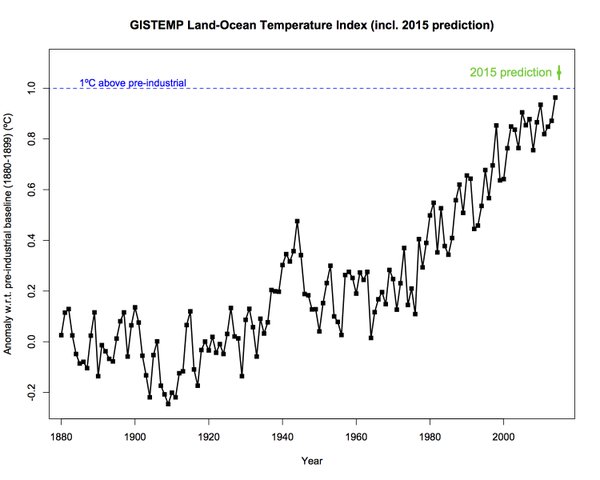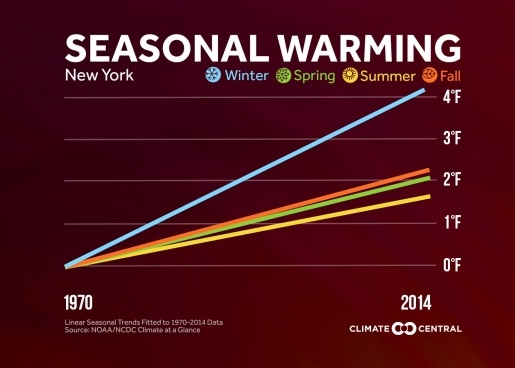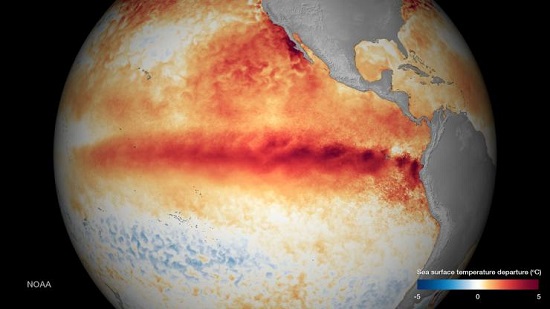1. Lakes warming faster than atmosphere
Courtesy of John D, from Gizmag, an item that has implications for algal blooms, health of species, food and methane emissions.
- Specifically, the results show that the average temperature in the lakes has been rising by 0.61 degrees Fahrenheit every 10 years. While that might not seem too significant, it’s a higher rate of warming than witnessed in either the atmosphere or the ocean, and the long-term effects could be pronounced…
The researchers predict that the continued increase in lake temperature will bring with it an increase in algal blooms by a much as 20 percent over the next century, lowering the water’s oxygen levels while increasing toxicity for fish and animal life. Additionally, the temperature rise could cause an overall rise in methane emissions by as much as four percent in the coming decade.
The temperature increases are a little less pronounced in warm-water tropical lakes, but even then are still significant enough to have a negative impact on the fish. This could be a particular problem in areas such as the African Great Lakes, where fish is a major source of food.
All in all, if the temperature rise is left to continue, it could have significant negative impacts on the environment.
See also The Washington Post.
2. 2015 will be a scorcher
November was the warmest on record, the seventh record month in a row. November was the second most-anomalously warm month ever. 2015 will break the record by a country mile. Gavin Schmidt of NASA GISS tweeted this chart:

If we want to stay within 1.5°C we’d best stop now, because we are about to pass 1°C and there is always 0.6°C momentum in the system.
Climate Central shows that winter is the warmingest season:

3. El Niño impacts weather systems across the globe
Skymet lists the weather impacts of El Niño, I think without mentioning Australia.
El Nino has already made 2015 the hottest year on record and is expected to make 2016 sizzle.
Yes, indeed, 2016 could be hotter than 2015, and that is what is being predicted by the United Kingdom’s Met Office.
Here’s an impressive image from NOAA of the sea surface anomaly, dating back to mid-October:

4. Chagos Archipelago reefs found to be resilient
A study of 28 reefs that lost 90 percent of their corals in 1998 were found to be “incredibly resilient”. They were now found to be back to optimum health. It helps that there is no human habitation in the area.
Nevertheless corals live in a temperature range of about 1°C to 1.5°C, so are still vulnerable.
Closer to home, the interim report by the Great Barrier Reef Water Science Taskforce has found climate change is the reef’s biggest threat. But:
- Targets to improve water quality in the Great Barrier Reef will be difficult to reach without significant increases in funding and an overhaul of governance and policy, a Queensland Government taskforce says.
5. Climate action after Paris
The World Bank has taken the Paris agenda on board. Jim Yong Kim, President of the World Bank Group, identifies five important steps:
- First, we need to approach development differently. Climate change must be considered in all of our work – from building cleaner cities to producing more food on less land – with a much stronger focus on adapting to changing climate patterns. …
Second, we need a clean-energy transformation at the speed and scale of the digital revolution. The Paris talks sent a clear signal to markets, public officials, and investors that low-carbon growth is the future. Market forces will drive this agenda forward…
Third, businesses must immediately become climate literate.
Fourth, world leaders must push harder for carbon pricing.
Finally, finance will be critical. National climate action plans – submitted by more than 180 countries – identify trillions of dollars of climate-related needs….
The World Bank Group has pledged to increase climate financing to as much as $29 billion annually by 2020.
6. We could be underestimating Arctic methane emissions
A new study took a look at methane emissions during the winter in the Arctic. They found:
- Emissions from September to May accounted for about half of all the methane emitted from those sites throughout the entire year.
- Dry sites emitted more than wet sites.
- There was significant variation in the sites.
More data needs to be collected and more work needs to be done on the models.

